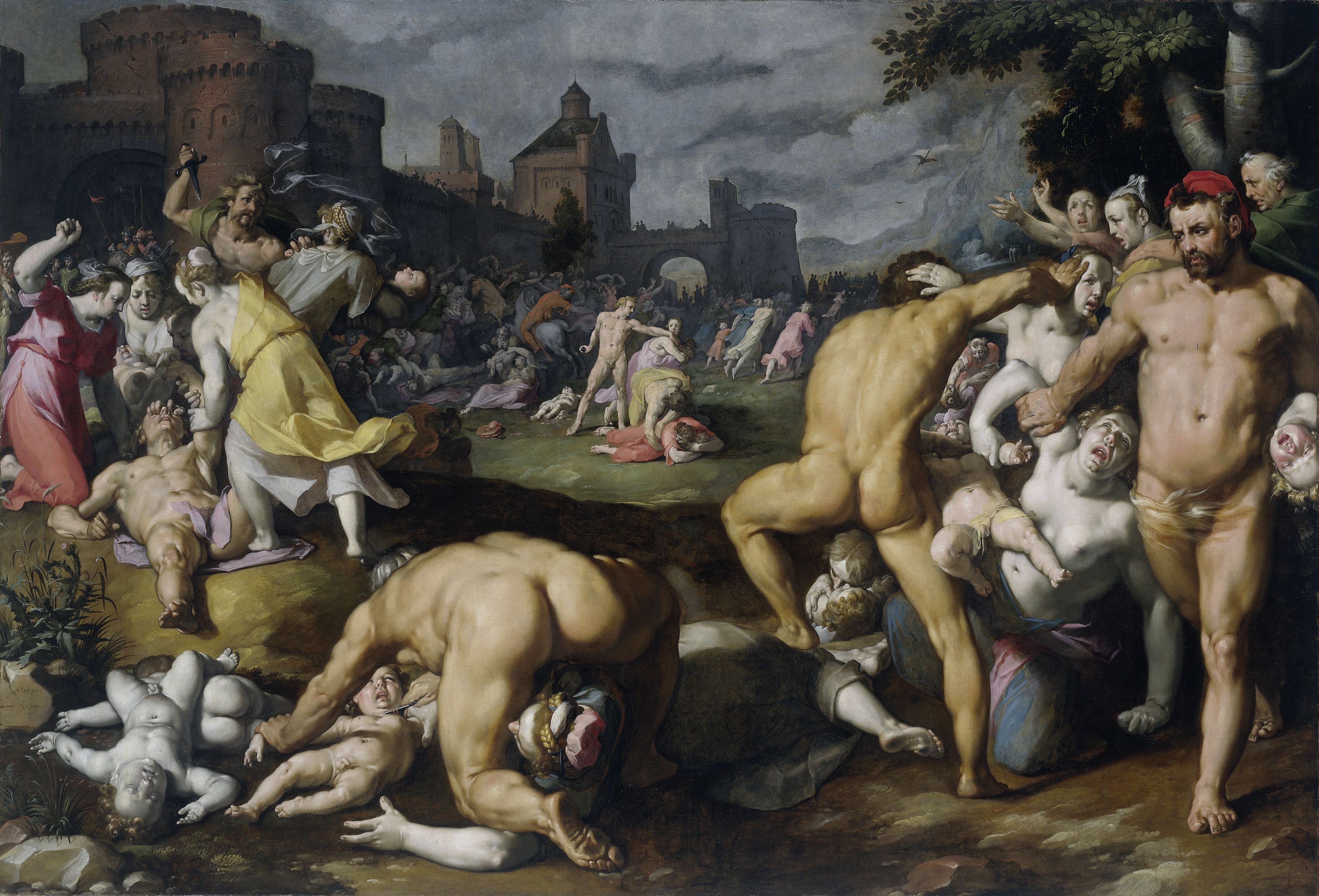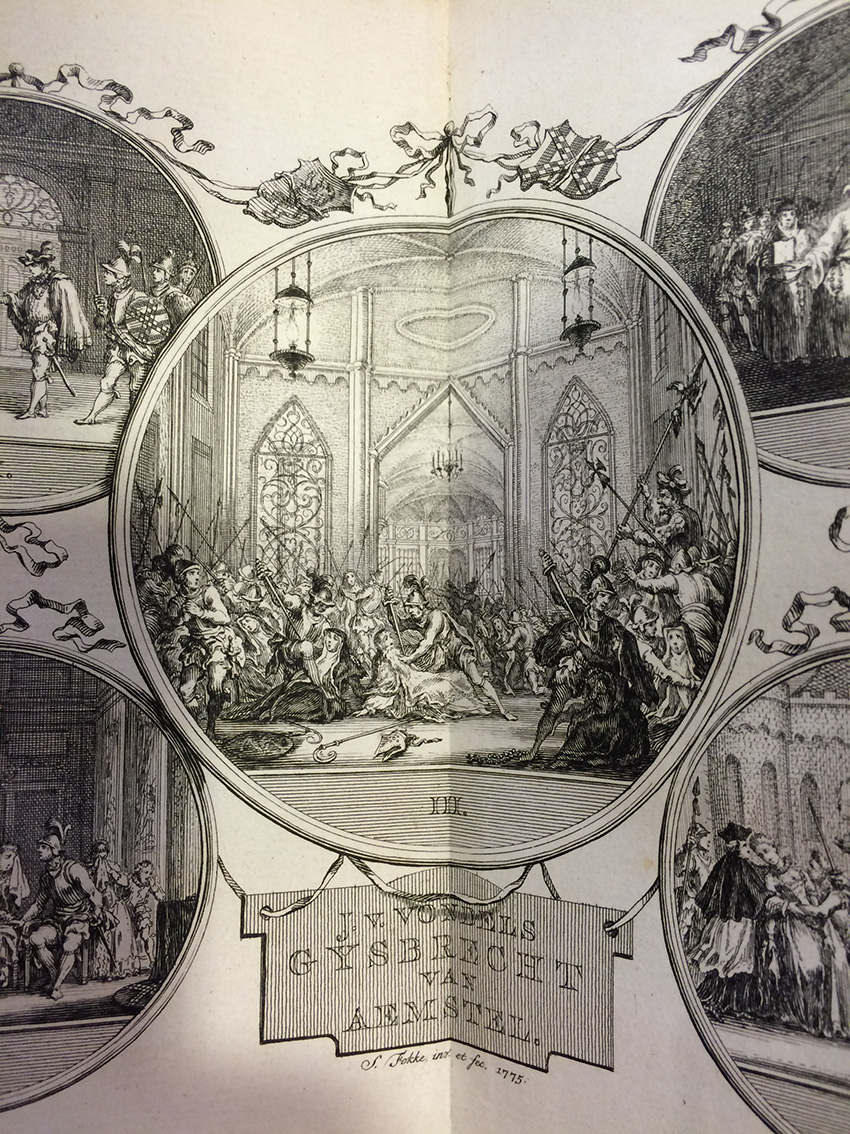Dutch Christmas: Morbid & Melancholic Music
In this blog post, Tim prepares for Christmas Eve in his own special way by listening to the Christmas Carol 'O Kerstnacht, schooner dan de dagen', written by Joost van den Vondel in 1637.
It is maybe the most iconic Dutch Christmas Carol ever: ‘O Kerstnacht, schooner dan de dagen’ (‘Oh Christmas Eve, lovelier than the day’). With 390 other songs using the same melody it is the third most popular Dutch song ever. It might have been composed by Dirck Jansz. Sweelinck (the son of the famous Dutch composer Jan Piertersz. Sweelinck) or Cornelis Padbrué according to the Nederlandse liederenbank (Dutch Song Database). Despite its popularity, the song is also a bit gloomy for the time of Christmas.
No surprise that it was Joost van den Vondel, the Prince of Dutch Poets, who wrote it. He had written the song for his master piece Gysbreght van Aemstel, first published in 1637, but only performed at New Year in 1638. The play relates the sack of Amsterdam on Christmas Eve in the year 1304 at the hands of the people of Haarlem, Kennemerland and Waterland.
Version of ‘O Kerstnacht’ delivered by the popular Dutch performer Herman van Veen.

Cornelis Cornelisz. van Haarlem, The Massacre of the Innocents, oil on canvas, 1590. Rijksmuseum Amsterdam.
Amidst a city fallen into ashes stands a nunnery of the Nuns of Saint Clare on the Heiligeweg (Holy Way). And there, the nuns prepare for the celebration of Mass on Christmas Day. But they are also aware of the danger that lures outside. The Chorus of the Nuns of Saint Clare sings a song, which is reminiscent of the bloody slaughter surrounding Christ’s birth: the infanticide by Herod, king of Judea. Just like then, many innocent people will die this night:
O Kersnacht, schooner dan de daegen,
Hoe kan Herodes ’t licht verdraegen,
Dat in uw duisternisse blinckt,
En word geviert en aengebeden?
Zijn hooghmoed luistert na geen reden,
Hoe schel die in zijn ooren klinckt.
(Vondel, Gysbreght, vv. 903-908)
Christmas night, supernally bright,
How can Herod tolerate this light
That in your darkness glows and shines,
That we adore with feasts so joyous?
His pride to reason is oblivious,
And in his ears rings out and whines.
(trans. by K.P.G. Aercke, 1991)
The song is delivered by the Nuns of Saint Clare at the end of the third act, right before they are brutally raped, mutilated, and murdered themselves by the invaders of their cloister. They give voice to their Christmas spirit by reminding how much sorrow there exists in the world, even where it concerns the most joyous event ever: the birth of the Messiah.
Version of ‘O Kerstnacht’ delivered by the Christmas Singers from Amsterdam at the Hermitage Amsterdam. Conductor: Evert van Malkenhorst
Hy pooght d’onnoosle te vernielen,
Door ’t moorden van onnoosle zielen,
En weckt een stad en landgeschrey,
In Bethlehem en op den acker,
En maeckt den geest van Rachel wacker,
Die waeren gaet door beemd en wey.
(Vondel, Gysbreght, vv. 909-914)
To slay the Innocent is Herod’s goal,
So he slays every innocent soul;
He raises laments in country and town,
In Bethlehem, throughout the shire,
And stirs up Rachel’s spirit dire
Which wanders through the country, up and down.
(trans. by K.P.G. Aercke, 1991)
After they have delivered their heart-rending song, Gijsbrecht begs the nuns to flee their home with him. They decide to stay, however. The result is an agonizing sight to behold: the enemy rush into the nunnery to find the virgins still present. Then, they force themselves on them. In the end, ‘the nuns lie dead, their bodies in heaps across the floor of their beloved monastery, like a fallen garland of red and white roses’. In other words, red blood on white habits.
Simon Fokke, [The Middle Medallion of] Five Scenes from Vondel’s Gijsbrecht van Amstel, etching, 1775, University Library Leiden.
The defenceless group of nuns is also sexually defiled, thus, unable to keep their promise to their husband: Christ. A horrific sight to be sure, which was presented to the audience as a tableau vivant: an intense and impressive spectacle of the slaughter that was performed by the actors themselves, but simultaneously appeared as a ‘life painting’. However, we should not feel pity for the nuns. They are in a better place now as they said so themselves when they sang:
Bedruckte Rachel, schort dit waeren:
Vw kinders sterven martelaeren,
En eerstelingen van het zaed,
Dat uit uw bloed begint te groeien,
En heerlijck tot Gods eer zal bloeien,
En door geen wreedheid en vergaet.
(Vondel, Gysbreght, vv. 945-950)
Rachel, now give up your roving doom,
Your martyred children rest in their tomb.
Like firstlings they have begun to sprout
And, growing from your blood, will flower
Delightfully in God’s own bower,
Where no cruelty can pull them out.
(trans. by K.P.G. Aercke, 1991)
The song ‘O Kerstnacht, schooner dan de dagen’ is a Dutch classic: melancholic, gloomy, a bit morbid, but also beautiful to listen to. During Christmas, many Dutch people realize this time and again. However, the modern production of Gysbreght van Aemstel by theatre group Het Toneel Speelt does not include the song in their performances anymore. Too old-fashioned probably. Instead, they have replaced the iconic song with modern poetry.
Yet, for a good impression of the effect of ‘O Kerstnacht, schooner dan de dagen’, one can still visit a performance by theatre group Theater Kwast coming January (3, 4, 5, or 6 January 2019), which includes both a fine delivery of the song and an imposing tableau vivant of the murder of the Nuns of Saint Clare.
Further Reading
The full text of the play is available here:
Joost van den Vondel, Gysbreght van Aemstel. Edited and with an introduction by Mieke Smits-Veldt. Amsterdam: Amsterdam University Press, 1994.
A good English translation is offered by:
Joost van den Vondel, Gijsbrecht van Amstel. Translated, with an introduction and notes by Kristiaan P.G. Aercke. Ottawa: Dovehouse Editions Inc., 1991.




0 Comments